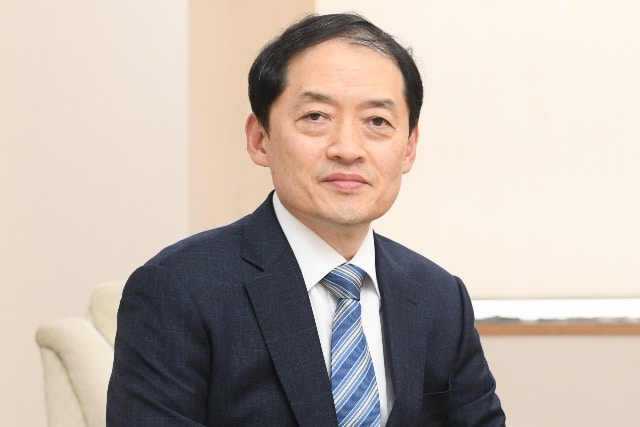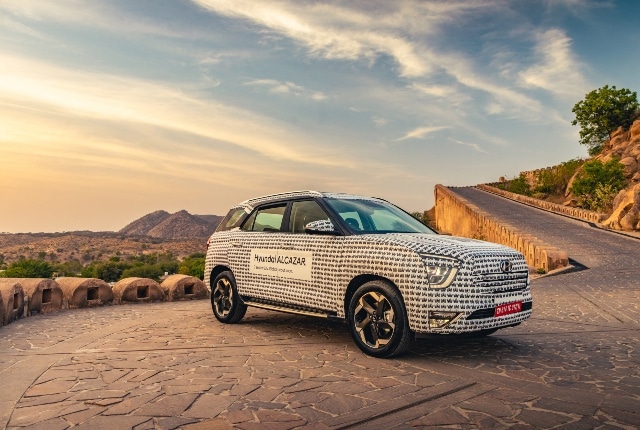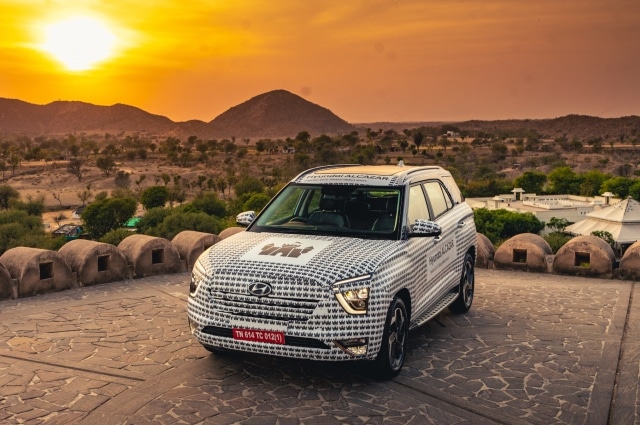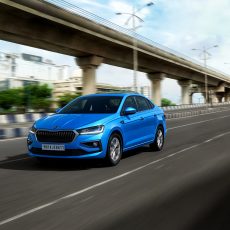On the sidelines of the exclusive media preview of Hyundai Motor India’s first six- and seven-seater SUV, the Alcazar, we had an in-depth conversation with Seon Seob Kim, Managing Director and CEO, Hyundai Motor India, and his senior team members to understand the thought behind the new model and the way forward for the Korean car brand in our market.

Car India (CI): What was the thought behind introducing a three-row version of the Creta in the market? What are your expectations with the Alcazar?
Seon Seob Kim (SSK): The Alcazar was planned based on our focus and understanding of the future demand of the Indian market. Buyers are seeking larger, family-oriented vehicles in India which can accommodate more family members. From a planning perspective, we decided to develop a multi-passenger vehicle that is more premium than the five-seater version. In the six-seater version, we decided to introduce luxurious middle-row seats and overall a car that is packed with great technologies and features. In the market we already have over six lakh existing Creta customers and more than two-three lakh Verna customers who would be looking at upgrading to a bigger vehicle in the coming years. These buyers would seek a more enhanced and premium customer experience. It is our responsibility to respond to those demands.
CI: So, right from the time you developed the Creta you had already planned to make a three-row version of the model?
Amit Dhaundiyal, General Manager (Product Planning), Hyundai Motor India (AD): At that time, the five-seater market was our focus and so we started with that first. As you know, we continue to do market research trying to understand what the customers are looking at. While we developed the Creta, we had the three-row in the plan but at that point we thought of doing it going forward, considering the demand. Now we feel that the time is appropriate (for a three-row version). And as our MD said, we would also like to give our existing customers a high-position vehicle that they can upgrade to. Also, we understand that customers are seeking to travel in luxury and style. Considering these things, we have brought the Alcazar as we feel that the market is ready for a product like this.

CI: What would Alcazar have over the Creta in terms of features and are some of these India-specific?
AD: If we look at the Creta, it is a five-seater and it’s more of an individualist car which is often self-driven. There are many families that are chauffeur-driven and they want to be more comfortable when seated on the rear seats. That’s why we have three-row seating, especially the Captain seats (in the six-seater) offer them a lot of comfort and plenty of features around them, making it ideal even for long drives. Not to forget, the Alcazar gives people the option of accommodating six or seven people in comfort. Even in the third row, we have dedicated air-conditioning (separate compressor and vents) and a couple of USB ports that can be used to charge or connect smartphones and tabs.
SSK: I’ll give you a personal example from Hyundai Motor India. There are many Korean expats here who have three kids but have a chauffeur who drives them around in Delhi. The family of five plus the driver find it difficult to fit in the Creta when they want to go out dining or shopping. They are also waiting for the launch of the Alcazar so that they can enjoy going out with their families.
CI: At the Hyundai dealerships will the executive now offer new Creta buyers to go for the Alcazar instead or will there be a completely new set of buyers?
SSK: Well, some of the buyers will be Creta buyers. But we are expecting more customers coming from other segments and brands as well. Since our customer’s brand loyalty is very strong, we expect that many existing Hyundai owners will upgrade to the Alcazar and that’s why we have introduced the model to meet their needs.

CI: Will there be a stark difference between the six-seater and seven-seater versions of the Alcazar, similar to the Maruti Suzuki Ertiga and XL6?
Tarun Garg, Director (Sales, Marketing and Service), Hyundai Motor India (TG): There will be various options available — six- and seven-seater across numerous powertrains. All I can say at this stage is that customers will get various fuel options, manual and automatic options, and six- and seven-seater options. We understand that in India the customer requirements can be different, but we are not going the way you mentioned.
CI: Many car companies have clearly stated that the third row be strictly for children. Is it the same with the Alcazar?
AD: The third row of the Alcazar can be used by adults also, but generally it is recommended for teenagers. The best part is that the second-row seat can slide forward to create more room at the rear. Also, the middle row has a one-touch trip-and-tumble function which makes getting in or out of the third row very convenient in the Alcazar.

CI: Did you think about introducing a proper MPV from your global portfolio, like the Starex (H1) van, instead of re-engineering the Creta platform for a three-row model?
AD: Firstly, the Starex is an MPV, which is a completely different product and is more or less based on the Kia Carnival platform. So, the price of that model would be quite high. Whereas the Alcazar has been specially developed for the Indian market. We have done a good amount of research in terms of what to offer with the Alcazar without forgetting the price point and position of the model.
TG: I must add one point here. If you see the customer preference, you’ll notice that it is shifting towards SUVs. The first quarter is almost 34 per cent SUVs for the entire Indian car industry (Hyundai sales consist of around 46 per cent SUV models); in comparison, MPVs make just seven per cent. We have recently become the number one SUV maker in the country. The customer expectation from Hyundai is to have a six- seven-seater SUV. As our MD mentioned, existing Creta and Verna customers are looking for an upgrade and so many new customers are waiting for a seven-seater premium SUV from Hyundai. There is a clear opportunity for a six- seven-seater SUV.

CI: You have become the market leader in SUVs, but what are the growth prospects of the sedan segment in general?
TG: During its peak in 2015, it was around 23 per cent and last year the sedan segment was 11.5 per cent for the overall industry. Even this percentage is still quite a big chunk of the market. Both things are important, first is the current trend and the other is the sheer size. For instance, the trend for hatchback models isn’t rising, but still it is contributing to 45 per cent of the overall industry. We cannot ignore such a big segment. That’s why in the sedan segment, we launched the new Verna last year and the response from the customers has been extremely good. It’s been eight months and we still have huge back orders, both in petrol and diesel engines. We also launched the Aura last year and are doing close to 4,000 units every month. Hyundai’s ability to offer choices to the customers with a wide range of cars in different fuel and gearbox options is the reason for the brand’s success.
SSK: I feel that, generally, people don’t have the right perception about sedans in general. Take, for example, Tesla. Are they making SUVs? All they are making are sedans. So far as I know, the Indian enthusiasts and tech-savvy buyers are very excited about Tesla sedans and aspire to own one. What will determine the future of sedans is not the body type but innovation and new technologies. If we incorporate that in our sedans, it will be welcomed and well accepted by customers.
CI: Now that you have a seven-seater based on the Creta platform, are there any similar plans for the Venue platform?
TG: I feel the Alcazar should be looked at as a totally different product and when you see the car in flesh, you will realise how different the product really is. Right from the exterior, interior, functionality, and even powertrain.
SSK: That’s why we have brought the third-generation 2.0-litre petrol engine which offers very strong performance along with good fuel efficiency. Both petrol and diesel engines will have the option of automatic transmission. This makes it ideal for people who enjoy driving and those who prefer to be chauffeur-driven.
AD: It has a longer wheelbase and the packaging has been done in such a way that the overall proportions are very good. In the customer clinics, people said that the Alcazar despite the size doesn’t seem too bulky and they can imagine themselves driving the vehicle every day. There are some bigger cars which look very cumbersome to drive daily due to the traffic situation.

Hyundai Kona
CI: With petrol prices reaching almost Rs 100 in many of the states, will this drive electric vehicle (EV) sales or, maybe, demand for more hybrids?
SSK: With the high fuel prices, I think diesel might be a better option for customers in terms of ownership cost and Hyundai offer plenty of diesel cars options. I think customers can save around 20 to 30 per cent by opting for diesel cars.

CI: In terms of pricing, will the Alcazar overlap the Tucson?
TG: These are two very different cars. Pricing will be just one part, as the Alcazar buyer would like to go on long journeys, they would have a bigger family and have a different lifestyle. The Tucson is a different segment altogether.
SSK: I would like to add that the Tucson is a global market model, while the Alcazar has been designed specifically for the Indian market. Going forward, we will export the Alcazar to other markets as well.
Also Read: Hyundai Alcazar Pre-Production Model Review




